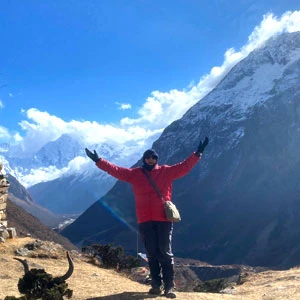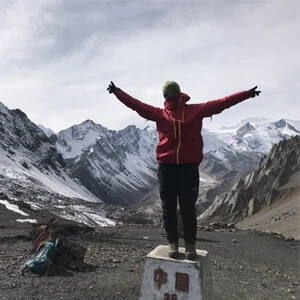Manaslu Tsum Valley Trek Overview
The Manaslu Tsum Valley Trek in Nepal is a stunning and remote Himalayan journey that takes you through the northeastern Gorkha District, bordering Tibet in western Nepal. This exceptional route explores two highly protected regions: the Manaslu Conservation Area and the Tsum Valley Restricted Area, both offering an unforgettable blend of raw landscapes, spiritual depth, and cultural immersion. Beginning from Machha Khola and concluding at Dharapani within the Annapurna Conservation Area, this off-the-beaten-path trail traces ancient salt trade routes to Tibet.
Manaslu Circuit Trekking Trail was first opened to trekkers in 1991 and the secluded route of Tsum Valley was only opened after 2008. Currently, this trek stands out as a restricted trekking region in Nepal and is only accessible through a government-registered trekking agency like Nepal Trekking Experts (NTE). You will also need to obtain special trekking permits and must be accompanied by a licensed local guide.
Geographically, the terrain of the Manaslu Trek is spectacularly diverse. It follows the Budhi Gandaki River valley, weaving through lush lowland gorges, dense pine and rhododendron forests, high alpine meadows, glacier basins, and lateral moraines. During this adventure, you will also get to cross the iconic Larkya La Pass (5,106 meters), one of the highest passes in Nepal.
Once in this summit, you will be rewarded by panoramic vistas of Manaslu alongside the majestic Ganesh Himal, Himalchuli, and neighboring peaks. The geography of the Manaslu region offers unmatched contrasts that range from subtropical greenery to icy highlands, making this adventure one of the most captivating treks in Gorkha District Nepal.
Culture & Buddhist Traditions in Manaslu Tsum Valley
The Manaslu Tsum Valley is one of the most spiritually rich and culturally intact regions of Nepal. Nestled in the remote Himalayan highlands of the Gorkha District, the Tsum Valley is a hidden gem of Tibetan Buddhism, largely untouched by modernization due to its restricted area status. Trekking through this sacred valley, you will walk through ancient trails lined with mani walls, chortens, and prayer wheels.
Here, Tsum Valley is home to several historic and spiritually significant Buddhist monasteries, including Mu Gompa, Rachen Gompa, and Gompa Lungdang, each of which offers an authentic glimpse into monastic life and daily rituals. These sacred spaces are inhabited by monks and nuns who still uphold traditional Tibetan practices such as chanting, meditation, butter lamp offerings, and communal prayer. Along the way, you will also find ancient meditation caves, like the famous Milarepa Cave. These caves are still in use and are considered holy pilgrimage spots by locals and travelers alike.
Similarly, the 24-Day Manaslu & Tsum Valley Region Trek portrays some of the most authentic culture in Nepal, reflecting a blend of Tibetan Buddhist and Nepali Hindu traditions. Throughout the year, you may get to witness or participate in some of these vibrant celebrations depending on your travel season.
- Lhosar: The Tibetan New Year, celebrated with masked dances, prayer ceremonies, and communal feasts. It is observed in February or March depending on the lunar calendar.
- Dupchen: A week-long group prayer festival held in monasteries like Rachen Gompa to focus on world peace and enlightenment. It is celebrated during March.
- Mani Chang: It is a monastic festival involving sacred Cham dances, ritual masked performances, and storytelling passed down through centuries. This festival is celebrated during mid-October and November during Purnima over two consecutive days.
- Dha Chang / Gode Jatra: A social festival celebrated with traditional music, lively dance performances, and elaborate rituals, often in the upper Tsum villages. It is celebrated during the Spring season.
- Kumje: A lesser-known but deeply revered local religious fair honoring deities and spiritual guardians of the valley. It celebrates the abundance of the harvest season in Autumn.
- Buddha Jayanti: It celebrates the birth, enlightenment, and parinirvana of Lord Buddha, marked with special pujas (prayers) and butter lamp offerings.
- Dashain and Tihar: They are Nepal’s biggest Hindu festivals which are usually observed in the lower Manaslu villages during October.
- Dumche: It celebrates local Tibetan Buddhist culture with elaborate rituals, masked dances, and the exhibition of sacred religious artifacts. This festival celebration can vary in date as they are determined by lamas.
- Chokor: It is a festival characterized by the ritual circumambulation of sacred sites, including monasteries and stupas. During this time, you can walk around these holy sites, offering prayers, and practicing meditation.
Why Manaslu & Tsum Valley Are Restricted Areas In Nepal?
The Manaslu Circuit and Tsum Valley Trek takes you into one of Nepal’s most secluded and protected zones, classified by the government as a restricted area trekking region. In this context, a “restricted area” means that you will not be able to obtain special trekking permits until and unless you issue them through a government-registered trekking company. These government-regulated zones were designated to safeguard fragile ecosystems, indigenous traditions, and geo-political boundaries.
Both the Tsum Valley restricted trek and sections of the Manaslu restricted region fall under this status. The Tsum Valley, often referred to as a “hidden valley of Nepal,” is one of the least commercialized trekking routes in Nepal. Home to deeply spiritual highland Buddhist communities, the valley preserves an ancient Tibetan cultural legacy. These communities are considered among the most authentic in the Himalayas.
In addition to cultural reasons, the Manaslu Restricted Area and Tsum Valley Restricted Area are ecologically sensitive with alpine forests, glacial basins, and high-altitude wildlife habitats that require protection from mass tourism. Moreover, these areas lie close to Nepal’s open border with China, which is why the Nepalese government prefers to allow only a limited number of trekkers through government-registered trekking agencies and licensed guides, ensuring controlled and secure access.
Other key reasons for the restriction include the preservation of unique local cultures and the government's belief that these regions may hold valuable mineral and mining potential. Now, if you enter these remote trekking areas in Nepal, the reward is exceptional: off-the-beaten-path adventures free from the crowds of Everest or Annapurna.
Permit Requirements & Cost for the Manaslu Tsum Valley Trek
To explore the restricted regions of Manaslu and Tsum Valley, you must obtain multiple government-issued permits. These permits help protect the cultural heritage and fragile ecosystems of this remote Himalayan region.
All these permits must be issued through a registered trekking agency in Nepal, and solo trekking in Manaslu Nepal is strictly prohibited. Therefore, you must travel in a group of at least two trekkers accompanied by a licensed guide. To get these permits, you must carry two passport-size photos and a copy of their passport for the application process and on-trail verification.
Below are the list of required permits for Manaslu & Tsum Valley in Nepal
- Manaslu Restricted Area Permit (MRAP): It costs USD 100 for the first 7 days and USD 15 per additional day if you are trekking during September to November. However, it costs USD 75 for the first 7 days and USD 10 per additional day if you are trekking during December to August. It is issued by Nepal Immigration Office (Kathmandu or Pokhara) and requires a minimum of two trekkers with a licensed guide.
- Tsum Valley Restricted Area Permit: It costs USD 40 for the first 7 days and USD 7 per additional day which is also issued by Nepal Immigration Office. This permit must be obtained through a registered trekking agency.
- Manaslu Conservation Area Permit (MCAP): It costs NRs 3,000 per person and is also issued by Nepal Tourism Board (Kathmandu or Pokhara).
- Annapurna Conservation Area Permit (ACAP): This permit costs NRs 3,000 per person and is issued by Nepal Tourism Board.
Altogether, these permits are strictly checked at multiple checkpoints along the Manaslu and Tsum Valley Trek Route. The trekking permit cost for Manaslu Nepal helps fund infrastructure and conservation efforts in the Manaslu Conservation Area Project and Annapurna Conservation Area Project.
How Much Does the 24 Days Manaslu Tsum Valley Trek Cost in 2025?
The Manaslu Tsum Valley Trekking cost in Nepal for 2025 typically ranges between USD 1,400 to 2,000 per person, depending on the group size, level of comfort, and services included. At USD 1,490 per person, Nepal Trekking Experts (NTE) offers a fully inclusive 24-day package if you are looking to explore this off-the-beaten-path Himalayan route without hidden fees.
Here, several factors influence the total cost of the 24 Days Manaslu & Tsum Trek including the number of trekkers, season of travel, choice of accommodation, and transportation mode, whether you opt for shared public buses or private jeeps. The larger the group and the earlier the booking, the better value you will get.
In our standard package, it include all essential services: trekking permits (MRAP, Tsum Valley, MCAP & ACAP), a licensed guide, porter service upon request, private jeep transportation (optional), three meals per day during the trek, and accommodation in local tea houses. Whether you are trekking with a pre-planned itinerary or customized Manaslu itinerary with upgraded services, NTE ensures full transparency with no hidden costs on the Manaslu Tsum Valley Trek.
Route Details of the 24 Days Manaslu Tsum Valley Trek in Nepal
The 24 Days Manaslu Tsum Valley Trek in Nepal takes you on a remote Himalayan journey through the culturally rich Gorkha District, beginning at Machha Khola (930 meters) and culminating at Dharapani (760 meters). This off-the-beaten-path trekking route in Nepal ascends gradually through lush river valleys, sacred Buddhist villages, alpine meadows, and glacial basins before crossing the dramatic Larkya La Pass at 5,106 meters.
Remote & Untouched Tsum Valley Route
The Tsum Valley route in Nepal branches off from the Manaslu Circuit at Lokpa on Day 5, leading you into a profoundly spiritual and culturally rich region. As part of the restricted trekking region of Nepal, this hidden valley, known as a Beyul in ancient Tibetan texts, has preserved its Tibetan Buddhist culture, ancient monasteries, and traditional way of life due to its isolation and government protection.
Once you diverge at Lokpa, the landscape shifts dramatically. The trail climbs steadily through dense pine forests, across suspension bridges, and along narrow, winding paths carved into steep hillsides. Between villages, the route is lined with mani walls, stone chortens, and fluttering prayer flags.
Here, you will hear the soft chant of monks echoing from distant hilltop gompas and pass by carved prayer stones. The villages themselves are composed of stone-built houses, yak pens, and terraced fields with stunning views of Ganesh Himal, Shingri Himal, and Baudha Himal.
Each village you will pass through feels like a living museum. In Chumling, you will be welcomed by friendly locals who still follow Tibetan customs in daily life. Further up in Chhaikampar at over 3,000 meters, you will get expansive views and insight into local lives centered around seasonal farming, spiritual practice, and communal rituals.
As you continue deeper into the valley, you will reach Mu Gompa, one of the oldest and most revered monasteries in the region. Nearby, you will find Rachen Gompa, a nunnery where female monastics uphold ancient lineages of prayer and discipline. Moving on from there, you will get to Gompa Lungdang which is accessible via a forested trail. While in here, you can stay overnight in these monasteries or nunneries.
These secluded religious sites are perched above 3,500 meters, surrounded by majestic Himalayan peaks and sacred landscapes. The accommodation here is basic but peaceful with simple monastic rooms, thin mattresses, warm yak-wool blankets, and the soft flicker of butter lamps. At Gompa Lungdang, you may even witness evening chanting rituals or early-morning prayers performed by devoted nuns.
Altogether, the trail between villages takes you through forests of birch, fir, and juniper, with the occasional sightings of Himalayan blue sheep, musk deer, and even red pandas in the higher zones. You may also see golden eagles and Himalayan griffons. On Day 9, you can also choose to hike toward the Tibetan border at Ngula Dhojyang. This entire segment through the off-the-beaten-path Tsum Valley reconnects with the Manaslu Circuit at Deng on Day 13.
High-Altitude Manaslu Circuit Route
After the initial approach from Machha Khola to Jagat (during day 3 to 4), the core Manaslu trekking trail resumes from Deng (on Day 13), taking you into the true heart of the high-altitude Manaslu Circuit Trekking Route. As the trail gradually ascends alongside the Budhi Gandaki River, the terrain shifts from lush subtropical forest into dramatic alpine landscapes.
From Deng to Namrung, you will begin to notice the cultural transition as houses change in architecture, people wear Tibetan-influenced clothing, and prayer flags start dotting the ridgelines. The village of Namrung perched at 2,630 meters, serves as a checkpoint and cultural hub where you will witness intricately carved wooden homes, small chortens, and children greeting you with “Tashi Delek.”
Beyond Namrung, the trail continues through a mesmerizing mix of rhododendron forests, pine groves, and stone staircases to Lihi, Sho, and eventually Lho. Here, Lho (3,180 meters) is known for its large monastery perched above the village, where you will see young monks in practice with the views of Manaslu. The people of this region belong predominantly to the Tibetan-origin Nubri community, and their lifestyle is shaped by a blend of agriculture, yak herding, and Buddhism.
As you ascend from Lho to Shyala (3,500 meters), the trail opens dramatically. Surrounded by 360-degree views of Himalchuli, Nadi Chuli, Manaslu, Ganesh Himal, and even Naike Peak, you will reach Shyala. It is a quiet settlement with scattered homes, a handful of tea houses, and vast open fields. Along this way, you may spot Himalayan tahrs, marmots, and even elusive snow leopards in the higher regions.
From Shyala, you will take a short hike that leads to Samagaun (3,520 meters), one of the largest and most important villages in the Manaslu region. This is a key stop for acclimatization and cultural exploration. The village lies beneath towering cliffs and is surrounded by barley fields and mani walls, with Birendra Lake. Now, you can choose to spend an extra day here or take a side trek to the sacred Pungen Gompa or the hike to Manaslu Base Camp.
The final stretch of this segment takes you to Samdo (3,860 meters), a high, wind-swept village just a few hours from the Tibetan border (Rui La Pass). Built on a hill with breathtaking views of the surrounding peaks, Samdo feels like the end of the earth. It's inhabited by descendants of Tibetan traders who still maintain seasonal trade routes across the border.
Throughout this section, the trail takes you in and out of deep river gorges, across suspension bridges, and through high-altitude forests. You will encounter yaks grazing along narrow paths, cross icy streams, and walk beside prayer-engraved mani stones.
Trekking Over the Larkya La Pass
The Larkya La Pass (5,106 meters) stands as the highest and most physically demanding point of the Manaslu Tsum Valley Trek. This legendary Himalayan pass is often described as one of Nepal’s most spectacular high-altitude crossings, offering both a mental and physical challenge. Your ascent to this pass begins well before sunrise, often in cold, dry air under a blanket of stars. You will make your way through a dramatic landscape of glacial moraine, ice-covered boulders, and windswept ridges.
The trail here is steep and rugged, with long stretches of uneven, rocky terrain and frozen patches. The thin air at over 5,000 meters will make each step feel heavier, and you will likely feel the effects of altitude: shortness of breath, fatigue, and slower pace. As the sun rises, you will get soul-stirring views of Himlung Himal, Cheo Himal, Kang Guru, Annapurna II, Larkya peak, and Jarkya Himal. On the way, you may also spot blue sheep (bharal) and even Himalayan griffons.
Nearing the summit, you will witness prayer flags fluttering in the wind. The feeling as you stand at the top of this pass is a mix of awe, exhaustion, and triumph. On the descent toward Bhimthang, you will notice the scenery shifts dramatically from stark, glaciated wilderness to lush alpine meadows and rhododendron forests.
Alternate Trekking Routes in the Manaslu Region
While the Manaslu Tsum Valley Trek offers a rich and immersive 24-day experience, not every traveler has the time, budget, or physical readiness to complete the full journey. Fortunately, the Manaslu region in Nepal provides flexible options to match your interests and budget, whether you are seeking deep cultural immersion, alpine adventure, or a more condensed high-altitude challenge.
Besides this 24-day adventure, you can also trek the Manaslu Circuit without the Tsum Valley. You can follow the classic Manaslu Circuit Trek route that circles the majestic Mt. Manaslu or opt for a Tsum Valley Trek to focus entirely on Buddhist culture and remote village life. Now, if you are short on time, you can also choose the Short Manaslu Trek.
Each of these trek options in the Manaslu region are customizable. Whether you choose the combined Manaslu Tsum Valley Trek or a classic journey, you can contact us today for a free consultation. We will help to design your personalized Manaslu Tsum Valley Trek in Nepal for 2025/2026.
Why Trek the Manaslu Tsum Valley in December 2025/26?
If you are wondering whether December is a good time to trek the Manaslu Tsum Valley, the answer is a confident yes, if you are seeking solitude, striking mountain views, and a deeper cultural connection. While December trekking in Nepal brings colder weather, it also offers unmatched clarity in the skies, peaceful trails, and a raw Himalayan ambiance that’s hard to find in busier months. This time is ideal if you are an experienced and well-prepared trekker looking to embrace Nepal’s high-altitude magic without the crowds.
Below are the top reasons to trek the Manaslu Tsum Valley in December 2025.
- Crisp, Clear Skies: Early winter offers exceptional visibility with bluebird skies and golden morning light which is perfect for photography and panoramic views of Manaslu, Himalchuli, and Ganesh Himal.
- Snow-Capped Beauty: Light snow blankets the high passes and alpine meadows, turning the trail into a Himalayan wonderland.
- Fewer Trekkers: Enjoy a true off-the-beaten-path trekking experience with nearly empty trails and uncrowded tea houses.
- Authentic Local Interactions: With fewer tourists, you will engage more intimately with locals in the Tibetan-influenced villages of Tsum Valley.
- Winter Festivals in Lower Villages: You may witness traditional events such as Dha Chang, Mani Chang, Lhosar, and Kumje, depending on timing and location.
Altogether, at Nepal Trekking Experts (NTE), we specialize in crafting safe and enriching Winter treks like the Manaslu Tsum Valley in December. Our licensed guides are locals from the Manaslu and Tsum regions, ensuring authentic insight into the land, culture, and traditions. With decades of experience, our professional trekking team is fully trained in first aid, satellite communication, and high-altitude safety protocols.



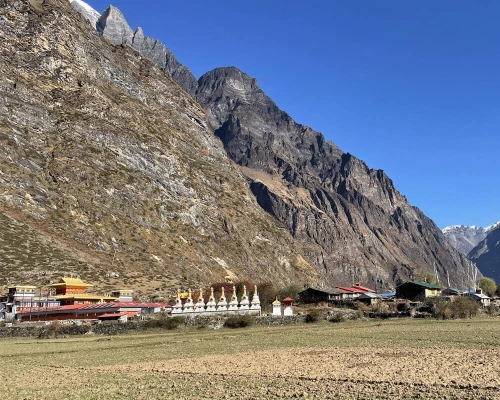
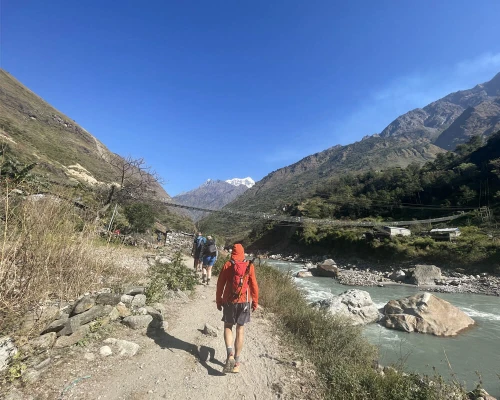
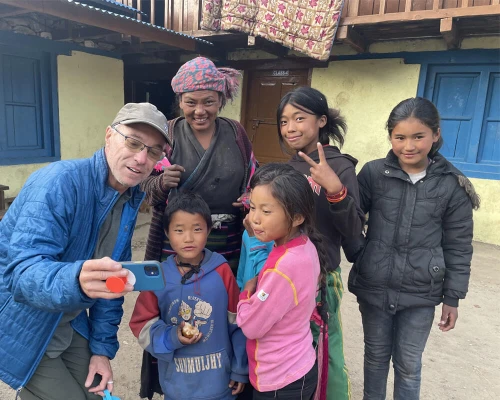
.webp)
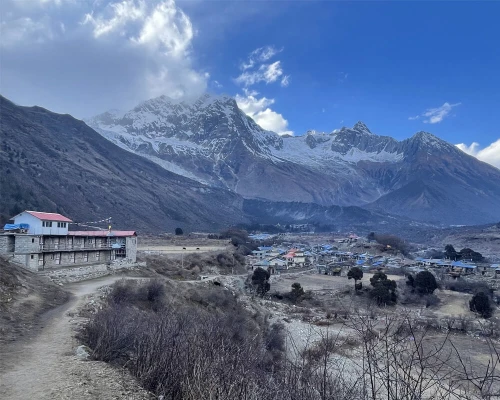
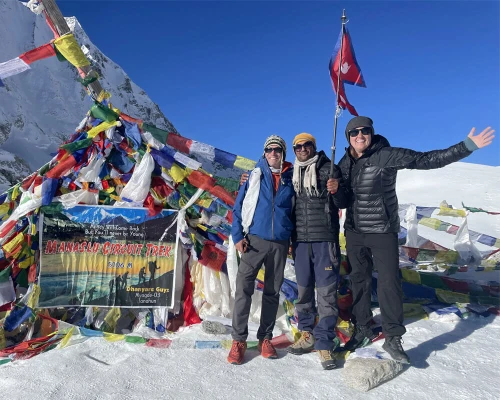
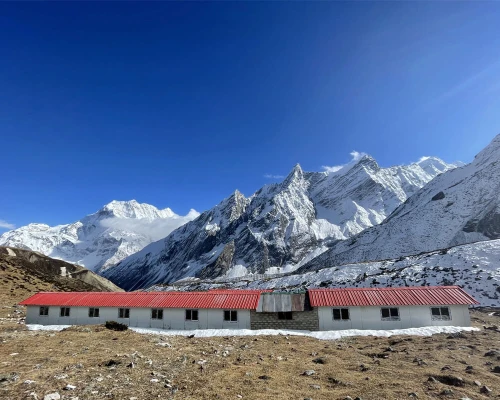

 based on 83 reviews
based on 83 reviews




